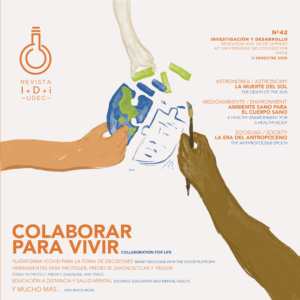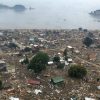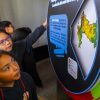Expert: Martín Jacques Coper
Department of Geophysics
Faculty of Physical and Mathematical Sciences
What is an atmospheric river? Why are they related to extreme atmospheric events?
“Atmospheric River” (AR) is the term used in meteorology to designate a structure in the atmosphere that transports a large volume of water vapor between remote regions of the globe, particularly from the tropics to the extra-tropics. If such a vapor turned into liquid water, it would have a flow rate comparable to that of large terrestrial rivers, hence its name. ARs are usually hundreds of kilometers wide and thousands of kilometers long, so they are seen as elongated bands in the atmosphere.
When this flow of moisture, which moves over the ocean over great distances, intersects the topography of a continent, the orographic rise of water vapor can generate intense precipitation. In fact, in south-central Chile, ARs cause about half of the annual accumulated rainfall, so they are necessary for the water cycle. However, ARs that impact perpendicularly to the Andes and are very durable or intense can cause significant accumulations of rainfall, increased flows, and floods and, therefore, also generate adverse impacts.
Has its frequency changed in recent years? What is the reason for this variation?
In the last four decades, a decrease in the frequency of ARs has been detected in the south-central area of Chile. This tends to be associated with a progressive poleward shift of storm systems in this period. This mechanism is partially related to human-caused climate change.
How are these phenomena studied at the University of Concepción?
At the University of Concepción, various efforts have been made to understand atmospheric rivers better. Among them, it is worth highlighting the installation of a series of meteorological sensors in recent years for the registration of concrete precipitation variables, in what we call the “Atmospheric Rivers Observatory”, an initiative supported by the CR2 Climate and Resilience Sciences Center, which has motivated the implementation of an intensive radiosonde launch campaign. In addition, within the COPAS-Coastal Center, a scientific team investigates the impacts of different types of ARs on the coastal marine environment. In addition, other research carried out in the Department of Geophysics investigates the relationship between ARs and precipitation patterns between the coast and mountain range in our region and even possible links with the occurrence of tornadoes in Chile. In all these initiatives, we want to recognize the state support for science from ANID through the aforementioned centers and FONDECYT projects.
Last modified: 3 de septiembre de 2025






